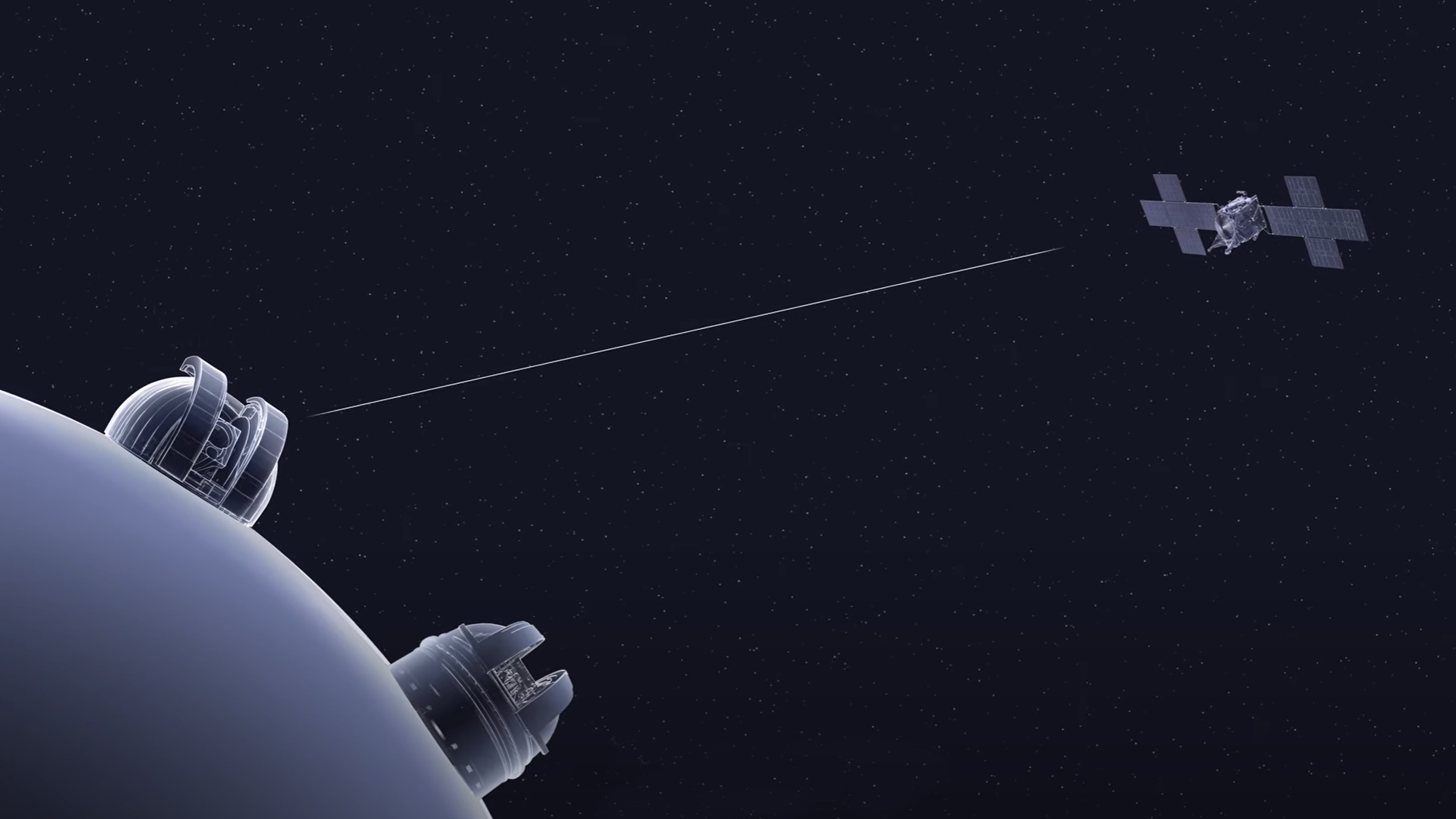Nasa spacecraft receives laser signal from 290 million miles away
Breakthrough could transform our exploration of the solar system, space agency says

Your support helps us to tell the story
Our mission is to deliver unbiased, fact-based reporting that holds power to account and exposes the truth.
Whether $5 or $50, every contribution counts.
Support us to deliver journalism without an agenda.

Louise Thomas
Editor
Nasa has successfully sent a laser signal about 290 million miles, smashing previous records and potentially transforming our exploration of the solar system.
The milestone was reached by Nasa’s Deep Space Optical Communications technology demonstration, which is exploring whether it is possible to use lasers to send messages deep into space. Lasers can send data at rates up to 100 times that of the radio frequencies used today, allowing for more complex and high-definition data, but they also require much greater precision to work.
It was sent to the Psyche spacecraft, which launched in October 2023. Its main mission is to study an asteroid with the same name, but it is also carrying the Nasa experiment to test laser communication through space.
The distance – which equates to about 460 million kilometres – is roughly the same as that between the Earth and Mars when they are their most distant.
Nasa hopes that the laser technology can help empower future crewed missions to Mars, among other exploration of our solar system, and so the successful test marks a major breakthrough.
“The milestone is significant. Laser communication requires a very high level of precision, and before we launched with Psyche, we didn’t know how much performance degradation we would see at our farthest distances,” said Meera Srinivasan, the project’s operations lead at NASA’s Jet Propulsion Laboratory, in a statement.
“Now the techniques we use to track and point have been verified, confirming that optical communications can be a robust and transformative way to explore the solar system.”
Nasa administrator Bill Nelson sent his congratulations to the team involved, on Twitter/X. “This extraordinary achievement will transform the way we explore the solar system,” he wrote.
Late last year, Nasa announced that it had successfully completed one such transmission from 10 million miles away. In the time since, it has broken through a whole set of records as Psyche continues to travel further from Earth.
That also included the first ultra high-definition video beamed from space. That happened late last year – when Psyche sent pictures of a cat named Taters.
As the distance from Earth increases, the speed of the connection is reduced. When it was 33 miles away, the spacecraft could receive data at its maximum rate of 267 megabits per second – but when the latest record was broken, in summer, it was hitting maximums of only 8.3 megabits per second.
Join our commenting forum
Join thought-provoking conversations, follow other Independent readers and see their replies
Comments